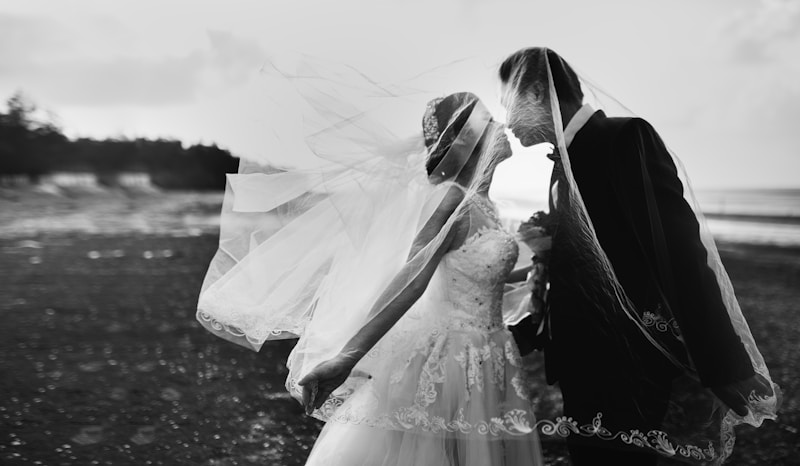Mastering Material Selection for High-End Wedding Gowns: A Comprehensive Guide
Mastering Material Selection for High-End Wedding Gowns: A Comprehensive Guide
Understanding the Importance of Material Selection for High-End Wedding Gowns
When it comes to high-end wedding gowns, the selection of materials plays a pivotal role in determining the overall aesthetic and quality of the dress. From the delicate lace to luxurious silk, every fabric brings its unique characteristics and charm to the bridal look. In this article, we will delve into the various aspects of material selection for high-end wedding gowns, exploring the types of fabrics, their properties, and how to choose the right material to create a stunning wedding dress.
The Significance of Fabric in Wedding Gowns
The fabric used in a wedding gown not only influences its appearance but also affects comfort, draping, and the overall feel of the dress. As brides often wear these gowns for several hours on their special day, the choice of material should also consider aspects like breathability and ease of movement. Additionally, high-end wedding gowns often feature intricate designs and embellishments, which require specific fabrics to showcase the artistry involved. Let's take a closer look at some of the most popular materials used in high-end bridal fashion.
Common Fabrics for High-End Wedding Gowns
| Fabric | Characteristics |
| Silk | Luxurious, soft, and natural sheen, known for its elegance. |
| Chiffon | Lightweight and airy, provides a romantic flow, often layered. |
| Lace | Delicate and ornate, perfect for creating vintage or bohemian styles. |
| Taffeta | Stiff and crisp, ideal for structured silhouettes with volume. |
| Organza | Sheer and lightweight, often used for layering and adding structure. |
| Tulle | Soft and net-like, commonly used in skirts and veils for volume. |
Choosing the Right Fabric for Your Wedding Gown
Selecting the appropriate fabric for a high-end wedding gown involves considering several factors, including the wedding theme, season, and the bride's personal style. Here are some tips to guide brides in making informed decisions:
1. Consider the Wedding Theme
The theme of the wedding will heavily influence the choice of fabric. For example, a rustic outdoor wedding may call for flowing chiffon or lace, while a formal ballroom affair may require luxurious silk or satin. Understanding the theme will help narrow down fabric options.
2. Think About the Season
Seasonality plays a significant role in fabric selection. Lightweight fabrics like chiffon and lace are perfect for summer weddings, while heavier materials like taffeta and satin are more suitable for fall and winter. It's essential to consider comfort alongside style.
3. Match the Bridal Style
Every bride has a unique vision for her wedding gown, and the fabric should align with her personal style. Whether it's a classic look with silk and lace or a more modern take with structured taffeta, the material can enhance the overall design. For instance, a sleek and minimalist gown might benefit from the smooth finish of silk, while a romantic era-inspired dress may shine in intricate lace.
4. Test the Fabric's Feel and Drapability
When selecting fabrics, it's crucial to touch and feel them to understand their texture and drape. A fabric that looks beautiful on a hanger may not provide the same effect when worn. Arrange for fabric swatches to be tested, allowing you to envision how the fabric will flow and fit when crafted into your gown.

Popular Trends in Wedding Gown Fabrics
Wedding fashion trends are constantly evolving, but certain materials consistently remain popular among designers and brides alike. Some trending fabrics for high-end wedding gowns this season include:
1. Eco-Friendly Fabrics
As sustainability becomes increasingly important, many designers are opting for eco-friendly fabrics like organic cotton, bamboo, and recycled materials. Brides looking for a more conscious choice should consider these options to combine elegance with environmental responsibility.
2. Layered Textures
Mixing different fabrics is a trend that allows designers to create stunning visual effects. Layering silk with lace or combining tulle with chiffon can provide depth and dimension to wedding gowns, transforming a simple design into something extraordinary.
3. Bold Colors and Patterns
While white remains a classic choice for wedding gowns, many modern brides are opting for bold colors and patterns that reflect their personalities. Fabrics that come in stunning colors or feature intricate prints can make a statement and set a bride apart on her special day.
Conclusion: The Art of Material Selection
In crafting the perfect high-end wedding gown, material selection is an art that combines beauty, comfort, and functionality. By understanding the different types of fabrics available, considering the wedding theme and season, and staying aware of current trends, brides can make informed choices that reflect their unique style and vision for their big day.
Ultimately, the right fabric will enhance the gown's overall beauty and ensure the bride feels comfortable and confident. Remember to prioritize comfort alongside aesthetics, test out fabric swatches, and consult with experienced designers for expert guidance. As you prepare for your wedding, may your choice of materials lead you to a gown that not only embodies elegance but also tells your love story in the most beautiful way possible.
As a final note, it's essential to anticipate and address potential questions during your fabric selection process, such as how certain materials handle various body types, the maintenance required for different fabrics, and predictions on how fabric might change over time as you wear your gown. With thorough research and deliberate choices, you're on your way to selecting the perfect fabric for your stunning wedding gown.
